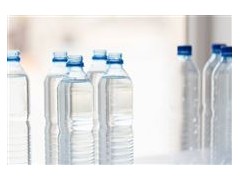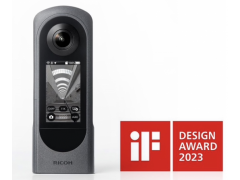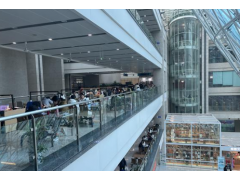Schmurphy Kappa's leaders held their first earnings call on Tuesday since the company acquired Westrock on July 5. "The uniqueness of Schmurphy Westrock cannot be overstated, and the combination of the two companies brings incredible expertise and broader opportunities for every stakeholder," CEO Tony Schmurphy said on the call. "The obvious question is what's next after the merger."
Smurphy said the company will follow the successful model of Smurphy Kappa and the next phase of our journey will take time. While he detailed the cultural alignment of the two companies' go-to-market strategies, he stressed that work still needs to be done to fully understand which areas are suitable for integration. "We haven't even really started to integrate the long-term opportunities of Smurphy Westrock," he said.
Considering that the new company was not established in the second quarter, executives disclosed the second quarter financial situation of Smurfit Kappa and said that the third quarter report would include Smurfit Kappa. Smurfit Kappa's revenue in the second quarter reached 2.97 billion US dollars, a year-on-year decrease of 3.6%, but due to the transaction costs related to the previous merger, its net profit fell 50.6% year-on-year to 132 million US dollars. For the whole first half of the year, its net sales were 5.899 billion US dollars, a decrease of about 6.6% from last year's 6.316 billion US dollars; net profit was 323 million US dollars, a decrease of about 41% from last year's 548 million US dollars.
Chief Financial Officer Ken Powers said that the net sales of Smurfit Kappa's original business in the second quarter fell 3.5% year-on-year, mainly due to lower average carton prices in European business. Corrugated box sales increased by 3.1% and daily shipments increased by 1.1%. Powers said: "Smurfit Westrock's balance sheet began its journey with significant strength and flexibility."
Executives detailed elements of Smurphy Kappa’s business model that they plan to bring to the new company, particularly the decentralized operating model. “We’ve started to dismantle some of the centralized pieces and push them back first to the divisions and then eventually to the local level,” Smurphy said.
Executives say the decentralized model has led to higher margins and profitability because the company targets more local customers rather than just large corporate clients. Mr. Powers said Smurfit Kappa has a record of investing capital internally, increasing dividends, reducing leverage and being disciplined in acquisitions.
When the two companies announced their intention to merge in September 2023, "we had already identified $400 million in synergies by the end of 2025," Powers said. Now, detailed work related to those synergies has begun. They are looking to target areas beyond those already flagged as synergies, such as known potential opportunities in Mexico.
Smurphy said they are also analyzing what to do with Westrock's solid bleached kraft board business. Smurphy said there are still some traditional carton plants that need to improve efficiency or stop production. Executives said some of the headwinds faced by the traditional business in the second quarter, such as those from input costs, appear to be a thing of the past. "Looking ahead, the market is now moving in our favor. The second quarter looks to be a trough, and there is a lot of room for both cyclical and structural growth," Smurphy said.
Smurfit expects the positive impact of Smurfit Westrock's price increases to be realized in the third and fourth quarters. Powers said one looming factor with an uncertain impact is the expected second-half maintenance of Westrock's legacy facilities, such as its carton plants. The company has not yet determined whether to provide forward-looking financial guidance on a quarterly or annual basis.
Graphic Packaging International, another American paper and packaging giant, also released its latest quarterly financial report, with net sales of $2.24 billion in the second quarter, down 6.5% year-on-year, and net profit of $190 million, up 26.7% year-on-year. For the entire first half of the year, its net sales were $4.496 billion, down about 6.9% from $4.83 billion last year; net profit was $355 million, down slightly from $357 million last year.
In an earnings call on Tuesday, executives at Graphic Packaging International said second-quarter sales were down. The decline was due in part to the sale of the Augusta, Georgia, mill to Clearwater Paper on May 1. In addition to the Augusta mill sale, other acquisitions also had a $16 million favorable impact on sales. CEO Mike Doss said sales were strong in the food and beverage end market, especially in the paper cup business, which was very busy.
The company plans to close two older, smaller coated recycled paper production facilities, which are expected to have an EBITDA impact of $80 million in 2026 and 2027. The closures are scheduled to take place after the new plant in Waco, Texas, begins operations. After the closures, Graphic Packaging Systems will have a total of five "modern and well-invested" paperboard production facilities, Chief Financial Officer Steven Scherger said.
Graphic Packaging is on track to generate $200 million in “innovation sales” growth by 2024, according to executives. Doss highlighted a European innovation that Graphic Packaging announced in June: a new paperboard food tray, PaperSeal Shape, developed in partnership with food company Moy Park. The change is expected to reduce plastic use by 300 tons per year.
The Sainsbury's grocery chain is the first UK customer to use the product, using it for its own-brand bread and chicken. The paper pallets can run on existing production lines that process plastic pallets without modification. "PaperSeal Shape embodies our success in creating more circular, practical and convenient packaging solutions," said Doss.
Graphic Packaging is raising prices on several grades, a move similar to competitors. Most of the industry’s big North American companies implemented their second price increase of the year this summer to reflect the Fastmarkets RISI monthly index, but the first increase was only partially recognized. “The vast majority of the increased selling prices will be realized in 2025,” Doss said.
Doss said July was off to an encouraging start. Graphic Packaging expects capital expenditures of $1 billion in 2024, above expectations of $950 million. The company adjusted sales growth for the second half of 2024 to 3% to 4% compared with the first half. Sherge said it is "quite unusual" for Graphic Packaging to experience such significant second-half growth.
Doss noted that graphic packaging is expected to be impacted in future quarters by customer McDonald's extending its value meals beyond an initial four-week period. Executives at the food service giant discussed the move during its second-quarter earnings call Monday as a way to potentially re-engage consumers who have been hurt by costs that have held back and contributed to McDonald's first sales decline in four years.
Finnish food packaging supplier Plugamik reported a 3% decline in net sales in the first half of fiscal 2024, from €2.09 billion in the first half of fiscal 2023 to €2.04 billion. Despite the decline in sales, the company's earnings per share increased significantly by 35%, from €0.72 in the first half of fiscal 2023 to €0.97. Pre-tax profit also increased by 28% in the first half of the year, from €142 million in the same period last year to €182 million. Plugamik's earnings before interest, taxes, depreciation and amortization also rose by 10%, from €270.1 million in the same period last year to €295.8 million.
In the second quarter of fiscal 2024, PULO's net sales fell slightly, from EUR 1.05 billion in the second quarter of fiscal 2023 to EUR 1.03 billion, with comparable net sales growth at the group level of -1%. However, earnings per share improved significantly in the quarter, from EUR 0.24 in the second quarter of fiscal 2023 to EUR 0.62. EBIT in the second quarter of fiscal 2024 was EUR 104.6 million, an increase of 91% from EUR 54.7 million in the second quarter of fiscal 2023. PULO's EBITDA increased by 20% in the quarter, from EUR 132.1 million in the same period last year to EUR 158.2 million.
Charles Elorme, President and CEO of Prue, said the business environment in the second quarter was largely consistent with the first quarter. We saw some signs of demand growth, especially for pre-packaged ready-to-eat products, but there were differences between regions and categories. However, price pressures increased across the value chain. Slow easing of inflation and unchanged interest rates continued to have an impact on demand in the second quarter. The ongoing Israel-Hamas conflict still affects global brands in some markets in the Middle East and Asia. International trade remains affected by logistical disruptions related to the Red Sea crisis. Despite some raw material costs and continued high labor inflation, the overall cost environment remains favorable.
Looking ahead, Pule expects trading conditions to improve compared to 2023, although volatility in the operating environment is expected to persist. The company is also counting on its initiatives, including ongoing savings and efficiency programs, to improve performance. In June, Pule announced the consolidation of its flexible packaging production site in the United Arab Emirates.




